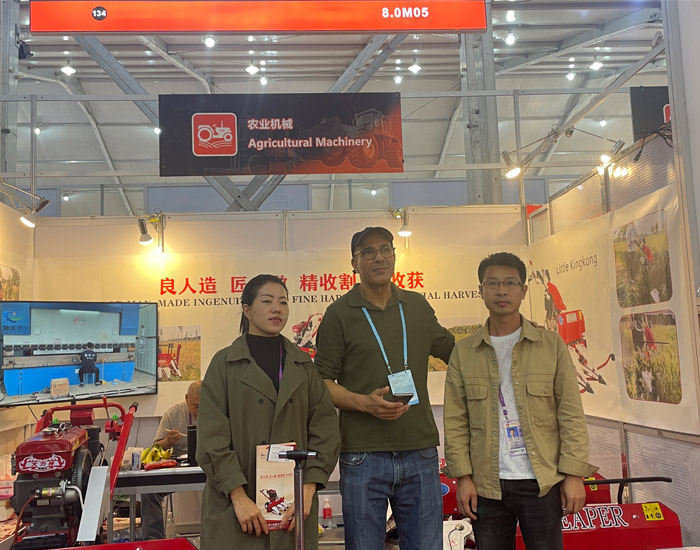Efficient Mini Harvester for Paddy with Advanced Technology and User-Friendly Features
The Evolution and Impact of Mini Paddy Harvesters
In recent years, agriculture has witnessed significant advancements in technology, particularly in the way crops are harvested. One standout development in this realm is the mini paddy harvester, a machine that has transformed the harvesting process for rice farmers around the globe. This article delves into the evolution of mini paddy harvesters, their advantages, and their impact on agricultural practices.
The Need for Mini Paddy Harvesters
Rice is a staple food for more than half of the world's population, particularly in Asia. The traditional methods of harvesting rice—largely manual—are labor-intensive, time-consuming, and often lead to high crop losses due to delays in harvesting. As the global population continues to grow, the demand for rice has surged, necessitating improvements in agricultural efficiency. The mini paddy harvester emerged as an innovative solution to tackle these challenges, allowing farmers to streamline their harvesting processes significantly.
A Brief History
The development of mini paddy harvesters can be traced back to the late 20th century when advancements in engineering and technology began to influence agricultural machinery. Initially, large-scale combines dominated the market, but they were often too costly and impractical for small and medium-sized farms. As a response, engineers began to design smaller, more affordable, and easier-to-operate harvesters tailored to the needs of local farmers. By the early 2000s, mini paddy harvesters had gained popularity in countries like India, China, and Vietnam, where rice cultivation is prevalent.
Key Features of Mini Paddy Harvesters
Mini paddy harvesters are characterized by their compact size and multifunctionality. Typically weighing between 200 to 300 kilograms, they are designed to navigate through narrow fields and wet terrains, making them ideal for rice cultivation.
Some key features include 1. Cutting Mechanism These harvesters often utilize a set of blades that efficiently cut the rice stalks at the base. 2. Straw Separation Modern mini harvesters are equipped with systems to separate the grain from the straw, significantly reducing the manual labor required post-harvest. 3. Ease of Use With user-friendly controls, farmers with minimal technical skills can operate these machines effectively. 4. Fuel Efficiency Many models are designed to consume less fuel compared to larger harvesters, making them economically viable options for small-scale farmers.
Advantages of Using Mini Paddy Harvesters
paddy mini harvester

The introduction of mini paddy harvesters has brought about several benefits
1. Increased Efficiency These machines can harvest rice much faster than manual methods, reducing the time between cutting and processing, which is crucial for preserving grain quality. 2. Reduced Labor Costs By mechanizing the harvest, farmers can lessen their reliance on seasonal labor, which is often in short supply and can be costly.
3. Minimized Crop Loss The precision of mini harvesters significantly decreases the amount of grain that is lost to shattering during harvest time.
4. Enhanced Accessibility Their smaller size allows farmers to access plots that would otherwise be difficult to reach with larger equipment, ensuring maximum yield from every field.
5. Sustainability By improving efficiency, mini paddy harvesters can contribute to more sustainable farming practices, allowing farmers to grow more rice on the same land while using fewer resources.
The Future of Mini Paddy Harvesters
As technology continues to evolve, the future of mini paddy harvesters looks promising. Researchers and manufacturers are focusing on enhancing features such as automation, GPS integration, and data analytics to further aid farmers in making informed decisions. The ongoing development of electric and hybrid models also fits into the broader narrative of sustainability in agriculture, aiming to reduce the carbon footprint associated with farming practices.
Conclusion
The mini paddy harvester is a prime example of how agricultural machinery can adapt to the changing needs of farmers worldwide. By enhancing efficiency, reducing labor costs, and minimizing crop losses, these machines are playing a critical role in ensuring food security in rice-dependent regions. As we look toward the future, the continued innovation in harvesting technology promises to unlock even greater potential, allowing farmers to meet the demands of a growing population while embracing sustainable practices.
Latest news
-
When to Upgrade Your Old Forage HarvesterNewsJun.05,2025
-
One Forage Harvester for All Your NeedsNewsJun.05,2025
-
Mastering the Grass Reaper MachineNewsJun.05,2025
-
How Small Farms Make Full Use of Wheat ReaperNewsJun.05,2025
-
Harvesting Wheat the Easy Way: Use a Mini Tractor ReaperNewsJun.05,2025
-
Growing Demand for the Mini Tractor Reaper in AsiaNewsJun.05,2025
